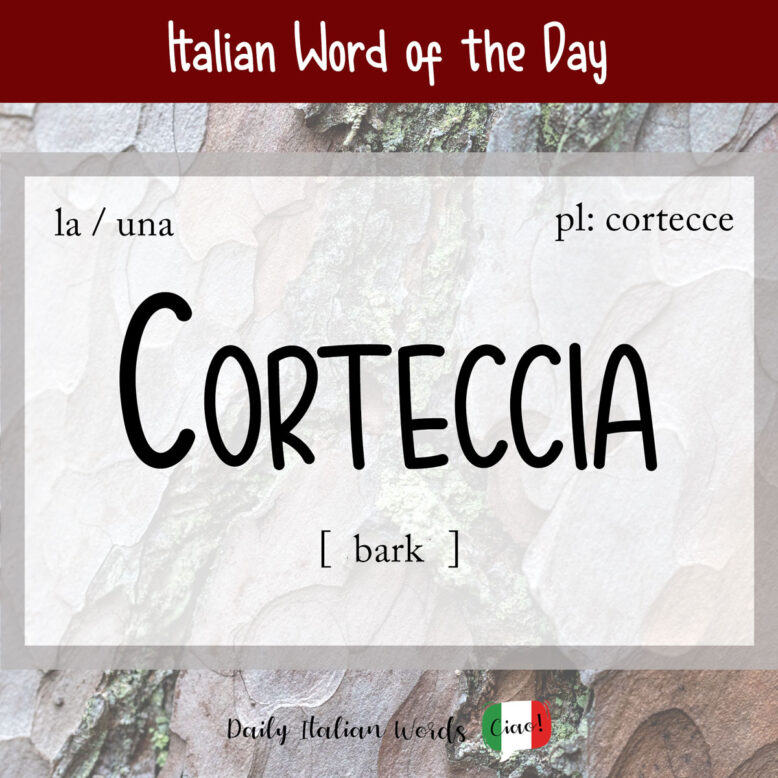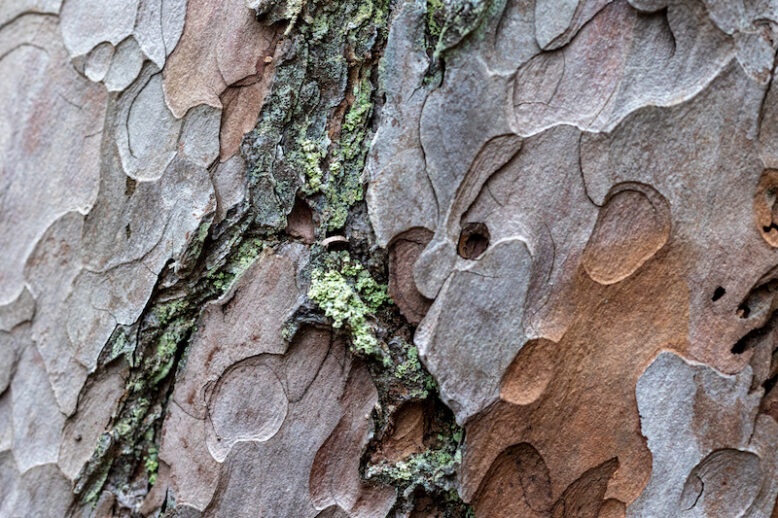The word for the bark that covers a tree is corteccia. The word originates from the Latin corticĕa, the feminine form of the adjective corticĕus, derived from cortex -tĭcis, meaning bark.
corteccia
bark

Here are the definite and indefinite articles you should use with this feminine noun. Note that in its plural form, cortecce, the -cia ending becomes -ce rather than -cie.
- la corteccia = the bark
- le cortecce = the barks
- una corteccia = a bark
- delle cortecce = some barks
Tocca la corteccia dell’albero: è molto ruvida.
Touch the bark of the tree: it’s very rough.

In anatomy, corteccia is also the word for one’s cortex, which is the outer layer of the cerebrum (much in the same way bark is the outer layer of a tree). You will also hear it called by the longer name corteccia cerebrale (cerebral cortex). It can also denote the outer layer of other organs such as the corteccia surrenale (adrenal cortex).
La corteccia cerebrale è considerata la struttura più complessa tra tutti i sistemi viventi.
The cerebral cortex is considered the most complex structure among all living systems.

Figuratively, corteccia can also denote the external appearance or layer of something, though this usage is uncommon. For instance, you might poetically describe the chocolate shell of certain ice cream varieties, or the crust of a loaf of bread as corteccia. Similarly, you could depict someone’s tough exterior personality as a corteccia concealing their softer side.
Sotto una corteccia di zucchero scoprirai un cuore di cioccolato.
Under a sugary shell, you will discover a chocolatey centre.
Heather Broster is a graduate with honours in linguistics from the University of Western Ontario. She is an aspiring polyglot, proficient in English and Italian, as well as Japanese, Welsh, and French to varying degrees of fluency. Originally from Toronto, Heather has resided in various countries, notably Italy for a period of six years. Her primary focus lies in the fields of language acquisition, education, and bilingual instruction.


